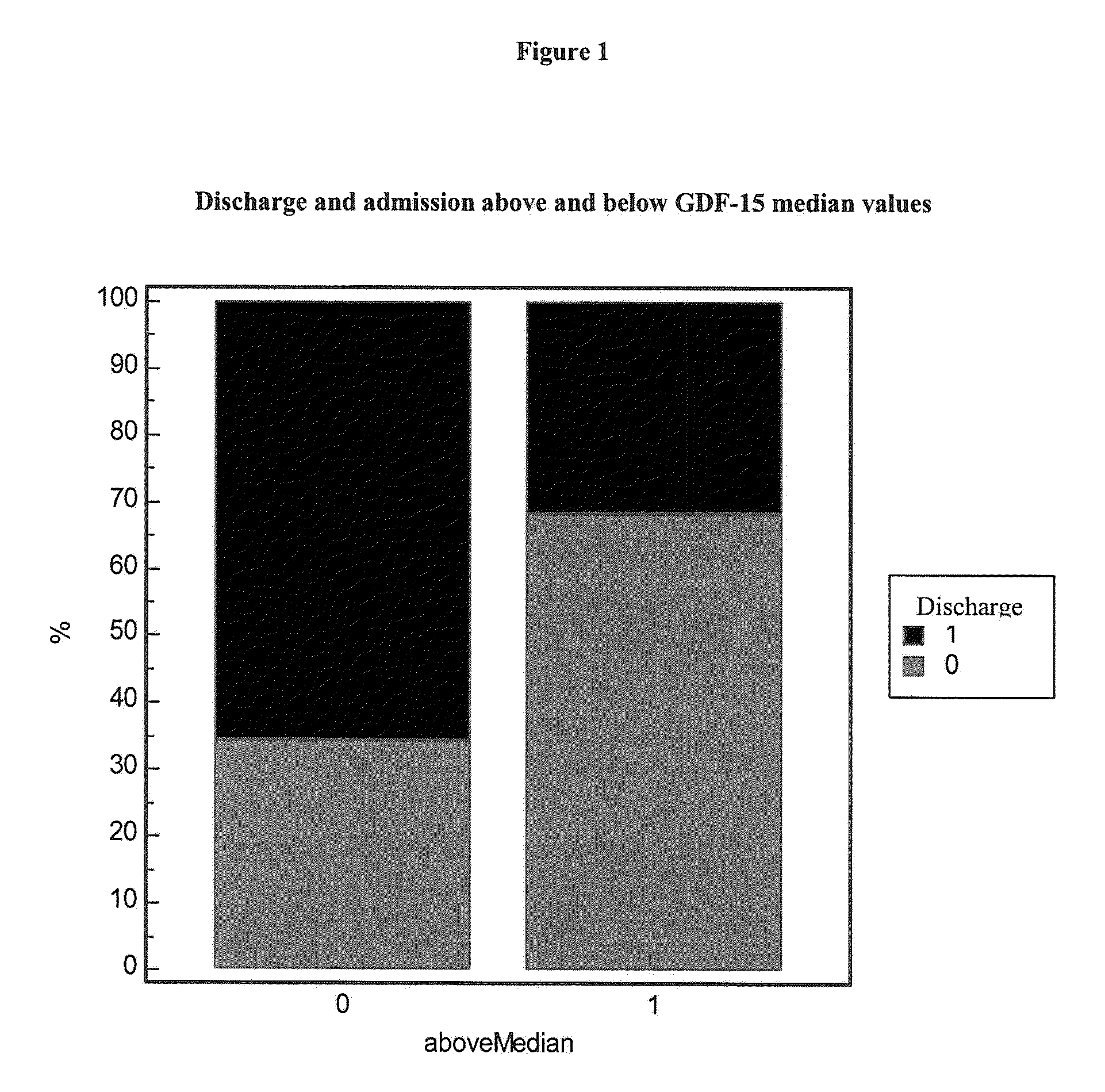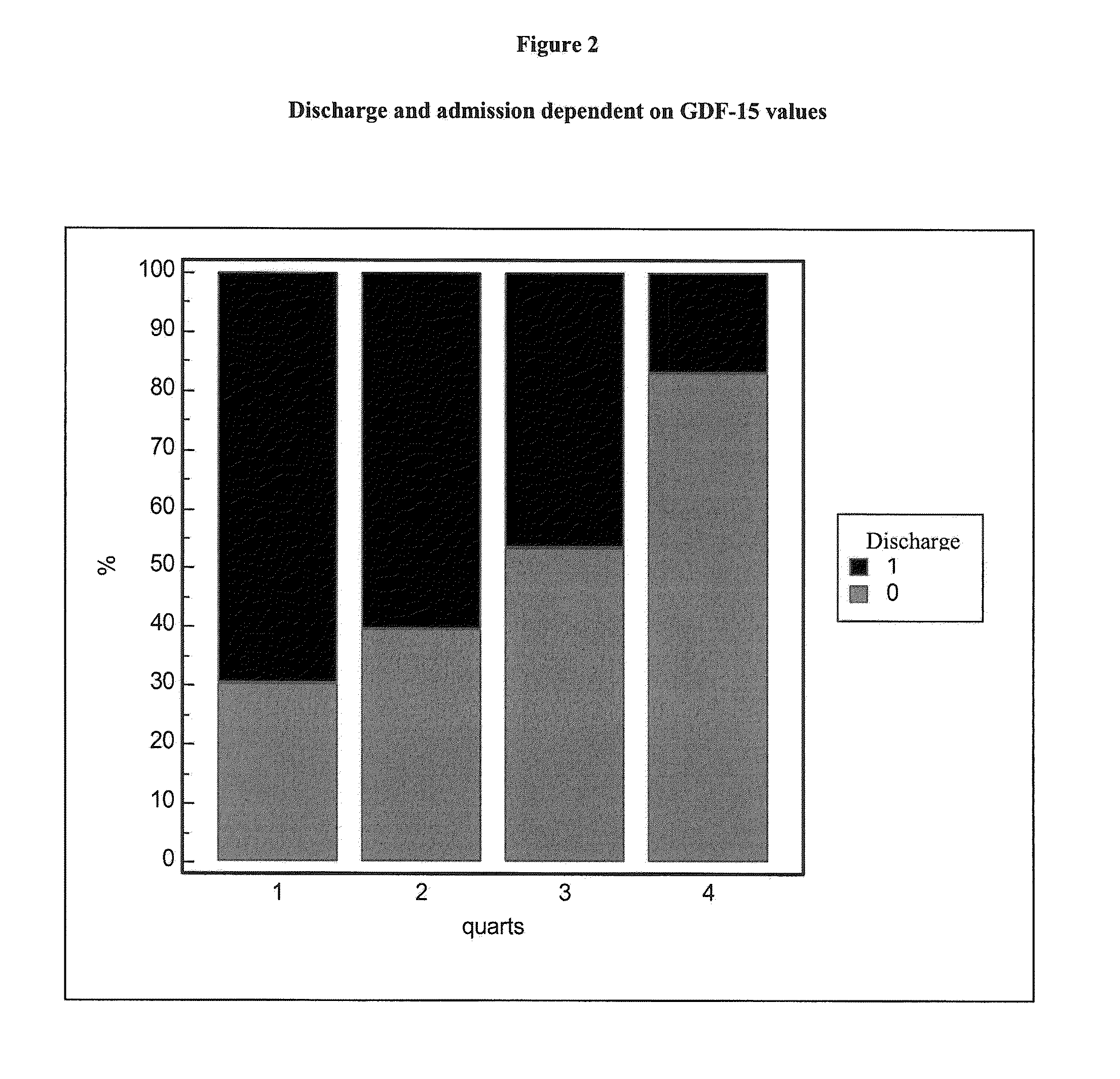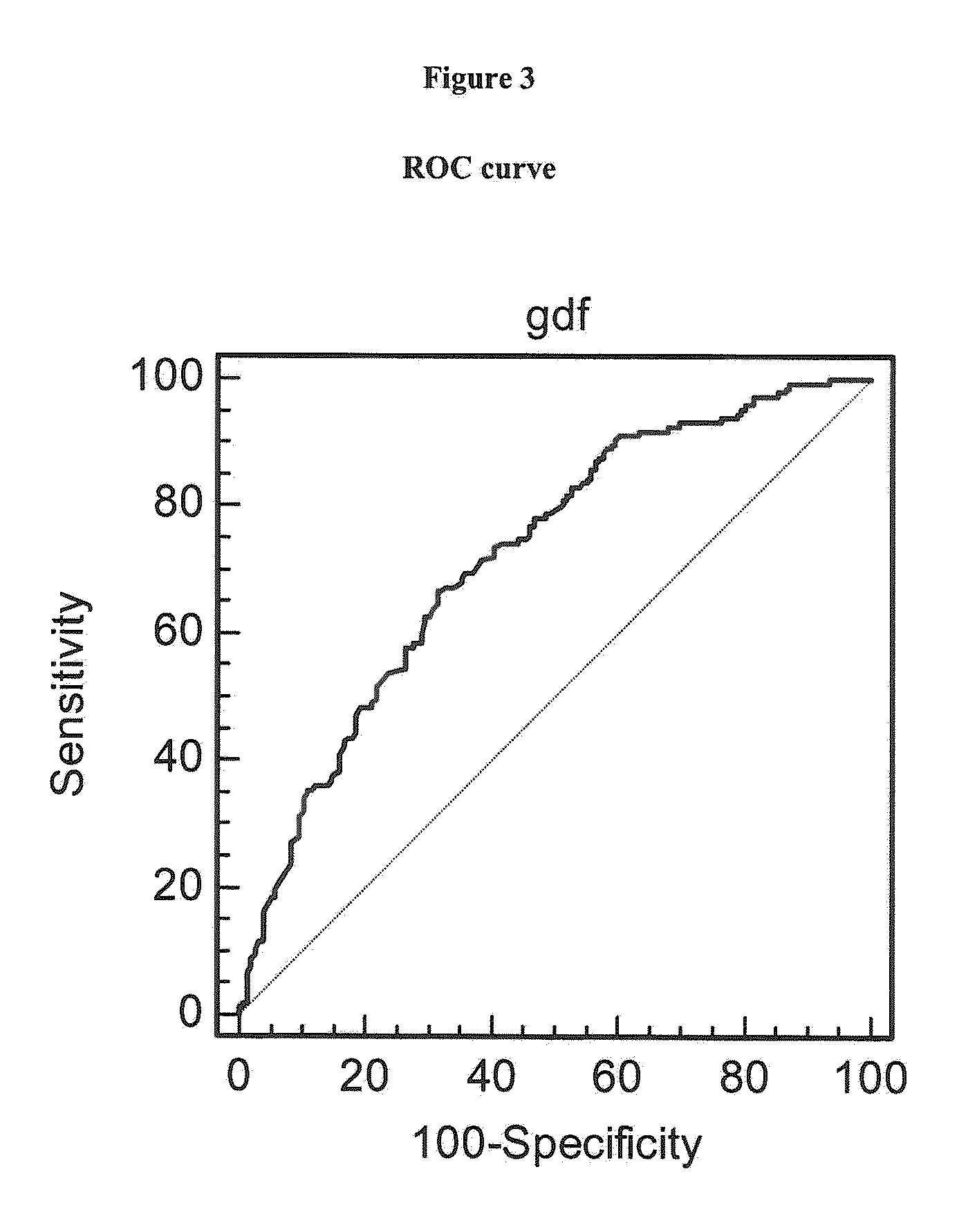Using gdf 15 to assess patients presenting to emergency units
a technology of emergency unit and patient, applied in the field of risk stratification in subjects, can solve the problems of morbidity and mortality, cardiovascular complications can remain asymptomatic for long periods of time, severe consequences,
- Summary
- Abstract
- Description
- Claims
- Application Information
AI Technical Summary
Problems solved by technology
Method used
Image
Examples
example 1
[0076]We tested the hypothesis that use of GDF 15 improves decision making in the emergency room and the overall management of patients presenting to emergency departments (EDs) by evaluating for incremental diagnostic and prognostic value of GDF 15, and prospectively examining the clinical impact of GDF 15 guided decision making regarding discharge, admission to hospital, and intensive care treatment.
Methods:
[0077]A total of 303 patients presenting to the emergency department (ED) of an university hospital were studied. Blood samples were obtained in the ED from all patients admitted. GDF 15 was determined in 302 unselected consecutive patients. Follow-up at discharge included the assessment of clinical course and treatment. The variables discharge, admission, and intensive care treatment were studied and associated to the baseline GDF 15 values. Cut-off thresholds of GDF 15 suitable for risk stratification and medical decision making (discharge or admissions to ICU or general care...
example 2
[0089]A 58 years old female was admitted to the emergency room with suspected gastrointestinal bleeding or acute gastritis.
Case History:
[0090]Chronic hepatitis B, liver cirrhosis
[0091]Weight: 62 Kg[0092]Size: 162 cm[0093]Heart rate: 60 / min[0094]Blood pressure: 70 / 138 mmHg
Clinical Signs and Symptoms:
[0095]No clinical signs for cardiovascular impairment.[0096]No clear clinical signs related to gastrointestinal bleeding or gastritis.[0097]Laboratory:[0098]GDF 15 value: 1.56 ng / ml;
Result:
[0099]The patient could be discharged to home!
example 3
[0100]A 81 years old male was admitted to the emergency room with suspected myocardial infarction in an unclear clinical situation.
Case History:
[0101]Stable coronary heart disease, kidney disease
[0102]Weight: 100 Kg[0103]Size: 178 cm[0104]Temperature: 39° C.[0105]Heart rate: 103 / min[0106]Blood pressure: 70 / 138 mmHg
Clinical Signs and Symptoms:
[0107]Dyspnea[0108]Cardiac murmur but no clinical signs of decompensated acute heart failure.[0109]No signs of myocardial infarction.
Laboratory:
[0110]GDF 15 value: 20.62 ng / ml; >8.21 ng / ml (rule in cut off value for admission to hospital).
Result:
[0111]The patient was admitted to the intensive care unit.
PUM
| Property | Measurement | Unit |
|---|---|---|
| time | aaaaa | aaaaa |
| nitrosative stress | aaaaa | aaaaa |
| area under the curve | aaaaa | aaaaa |
Abstract
Description
Claims
Application Information
 Login to View More
Login to View More - R&D
- Intellectual Property
- Life Sciences
- Materials
- Tech Scout
- Unparalleled Data Quality
- Higher Quality Content
- 60% Fewer Hallucinations
Browse by: Latest US Patents, China's latest patents, Technical Efficacy Thesaurus, Application Domain, Technology Topic, Popular Technical Reports.
© 2025 PatSnap. All rights reserved.Legal|Privacy policy|Modern Slavery Act Transparency Statement|Sitemap|About US| Contact US: help@patsnap.com



